SAP POS
Filter By
Browse By
- SAP Analytics and AI
- SAP Application Development and Integration
- All SAP Application Development and Integration
- SAP ABAP
- SAP ABAP Development Tools
- SAP ABAP Test Cockpit
- SAP API Management
- SAP BAPI
- SAP Basis
- SAP BRF
- SAP Business Application Studio
- SAP CMS
- SAP Design Studio
- SAP Development Tools
- SAP DevOps
- SAP EAI
- SAP EDI
- SAP Extension Suite
- SAP Fiori
- SAP Fiori Elements
- SAP Integration Suite
- SAP Low Code Application Development
- SAP Low Code Automation
- SAP Netweaver
- SAP Release Management
- SAP UI5
- SAP Web Application Server
- SAP Web IDE
- SAP Business Process Management
- SAP Center of Excellence
- SAP CIO
- SAP Customer Experience
- SAP Data and Data Management
- All SAP Data and Data Management
- SAP BW
- SAP BW/4HANA
- SAP Crystal Reports
- SAP Data Archiving
- SAP Data Center
- SAP Data Governance
- SAP Data Integration
- SAP Data Migration
- SAP Data Quality
- SAP Data Services
- SAP Data Strategy
- SAP Data Visualization
- SAP Data Warehouse Cloud
- SAP DMS
- SAP Document Control
- SAP EIM
- SAP ETL
- SAP ETL Tools
- SAP HANA
- SAP HANA Administration
- SAP HANA Deployment Infrastructure
- SAP HANA Studio
- SAP Master Data
- SAP Master Data Governance
- SAP MDM
- SAP Enterprise Architect
- SAP Enterprise Asset Management
- SAP ERP
- SAP Finance
- All SAP Finance
- SAP Accounting
- SAP AR AP
- SAP Asset Accounting
- SAP Billing Systems
- SAP BPC
- SAP BRIM
- SAP Cash Management
- SAP Central Finance
- SAP Controlling
- SAP COPA
- SAP Cost Center Accounting
- SAP Currency Risk
- SAP e-invoicing
- SAP FICO
- SAP Finance Automation
- SAP Advanced Financial Closing
- SAP Financial Consolidation
- SAP Financial Planning
- SAP FX Risk
- SAP General Ledger
- SAP Global Tax Management
- SAP Hyperion
- SAP Order to Cash
- SAP Payment Processing
- SAP Profitability Analysis
- SAP Rebate Management
- SAP S/4HANA Finance
- SAP SWIFT Compliance
- SAP Treasury Management
- SAP Universal Journal
- SAP Governance Risk and Compliance
- SAP Human Capital Management
- SAP Intelligent Technologies
- SAP Platform and Technology
- All SAP Platform and Technology
- SAP Business Technology Platform
- SAP Cloud
- SAP Cloud Connector
- SAP Cloud Integration Platform
- SAP Cloud Migration
- SAP Cloud Platform
- SAP Cloud Providers
- SAP Cloud Strategy
- SAP Digital Signature
- SAP Container Platform
- SAP HANA Enterprise Cloud
- SAP Digital Asset Management
- SAP Smart Forms
- SAP HEC
- SAP Digital Integration Hub
- SAP Hyperscalers
- SAP Infrastructure
- SAP Messaging
- SAP Quality and Testing
- SAP Security
- SAP Spend Management
- SAP Supply Chain Management
- All SAP Supply Chain Management
- SAP APO
- SAP Asset Management
- SAP Business Network
- SAP Digital Manufacturing Cloud
- SAP Digital Twin
- SAP EWM
- SAP IBP
- SAP Inventory Management
- SAP Label Printing
- SAP Logistics
- SAP Manufacturing
- SAP Manufacturing Automation
- SAP MES
- SAP MII
- SAP MM
- SAP MRO
- SAP MRP
- SAP Order Management
- SAP Plant Maintenance
- SAP PLM
- SAP Production Planning
- SAP S&OP
- SAP SD
- SAP SPM
- SAP Supply Chain Planning
- SAP Track and Trace
- SAP Transportation Management
- SAP System Administration
What Is Point of Sale?
Point of Sale (POS) represents the customer payment transaction for a brick and mortar or online retailer. As part of the POS, retailers rely on hardware and software to complete the transaction and process the payment.
POS: More than a Transaction
While the POS may appear simply as a transactional activity, it has implications for customer experience and profit for the retailer. Customers want and expect a checkout process that is quick, hassle-free, and easy to navigate.
What Is Point of Sale?
Point of Sale (POS) represents the customer payment transaction for a brick and mortar or online retailer. As part of the POS, retailers rely on hardware and software to complete the transaction and process the payment.
POS: More than a Transaction
While the POS may appear simply as a transactional activity, it has implications for customer experience and profit for the retailer. Customers want and expect a checkout process that is quick, hassle-free, and easy to navigate.
The POS is also critical for understanding customer preferences in terms of product selection and variety. Retailers gain valuable analytical insight into which products are selling, at what time of day, and in what quantity. This can provide better decision-making for the marketing and sales teams.
Lastly, integration between the POS, inventory management, and operational systems is critical for maintaining supply and demand balance and identifying potential revenue opportunities. Replenishment is essential for retailers to ensure the product is on the shelf where and when customers need it. Data from the POS should also be shared with suppliers to collaborate on product promotions and new product introductions.
SAP Customer Checkout Application
SAP’s point of sale solution is SAP Customer Checkout. According to SAP, the following are key POS capabilities of the application:
- Manage sales, returns, payments, coupons, and gift cards with a central POS system
- Access real-time reports, control sales and financial results, and extend and scale the application with flexibility
- Integrate with SAP S/4HANA or other ERP systems, or use as a stand-alone application
Key Consideration for SAPinsiders
- Case Study: AGRAVIS Transforms Its POS System for the Future. In this SAP case study, German agricultural trading company AGRAVIS needed to replace its legacy POS system to meet new cash register regulations and future POS transaction requirements. The company wanted a solution that integrated with its current software landscape, but also created a single source of truth of real-time sales and inventory data. AGRAVIS also required a solution that enabled capabilities for future omnichannel retailing. It chose the SAP Customer Checkout application with native SAP S/4HANA integration and linkage to existing legacy warehouse management systems.
A vendor in the point-of-sale space includes: Verbella.
365 results
-

 Premium
Premium
AUC with Investment Measure Using Work Breakdown Structure
Reading time: 20 mins
FinancialsLearn how to implement assets under construction (AUC) with the Investment Management module using work breakdown structure (WBS). Follow a detailed discussion of the settlement process. Key Concept A work breakdown structure (WBS) element with its assets under construction (AUCs) can be termed as an investment measure. In simple terms, an AUC is created to...…
-

 Premium
Premium
How to Detect BPC Risk in SAP Access Control
Reading time: 17 mins
Discover how to detect cross-system risk between SAP ERP and SAP Business Planning and Consolidation (BPC). See how BPC task profiles map to business functions and understand how to create cross-system connector groups and assign appropriate connectors to that group. Key Concept Cross-system groups logically define what connectors are involved in cross-system risk analysis. Task...…
-

 Premium
Premium
Integrating SuccessFactors Employee Central with SAP ERP HCM Master Data
Reading time: 21 mins
Learn how to integrate SuccessFactors Employee Central with your SAP ERP HCM system. After the successful integration, Employee Central becomes the system of record for master data and any changes to master data in Employee Central can be copied to the SAP ERP HCM system using iFlows. Key Concept For integration between the SuccessFactors and...…
-
-

- SAP BI Tools
 Premium
Premium
An Introduction to SAP Predictive Analytics 2.0 and SAP HANA Predictive Tools
Reading time: 64 mins
In this exclusive report by Hillary Bliss, take a walk into the world of the SAP suite of predictive tools with an in-depth tour of the new SAP Predictive Analytics 2.0 and how it ties into SAP HANA and SAP Lumira. Learn the importance of general predictive modeling concepts, and then apply those concepts as...…
-

 Premium
Premium
Yes, You Can Use Top-Down Distribution with Account-Based CO-PA
Reading time: 9 mins
Discover how to use the top-down distribution functionality in account-based profitability analysis (CO-PA) so that you can review reports on a more granular level — for example by customer, product, sales region, and so on. This is particularly useful where the original posting cannot be made at that level of detail. With this functionality, you...…
-

 Premium
Premium
Enable Multiple Search Criteria for Clearing in Electronic Banking
Reading time: 12 mins
Learn how to use multiple search criteria when clearing items with electronic bank statements. Discover some electronic banking limitations and challenges in dealing with bank data that require alternative methods to increase automatic match rates. To increase automatic match rates, you can use enhancement FEB00001 to modify table FEBCL and a screen enhancement in program...…
-

Prevent Data Disaster in Your SAP HANA System Landscape With Effective Backup and Restore Strategies
Reading time: 23 mins
Become acquainted with concepts, best practices, optimal settings, tools, and recommendations that are invaluable for SAP HANA database backup and restore operations. Key Concept An effective backup and restore strategy is vital to an organization because data and information are important assets of a business enterprise. Backup and restore activities ensure that an organization can...…
-
-

- SAP Finance
 Premium
Premium
SAP Simple Finance: What Happened to the Cost Elements?
Reading time: 12 mins
With SAP Simple Finance, the universal journal includes a single field account that covers both the general ledger (G/L) account and the cost element. As companies migrate to SAP Simple Finance, the system merges their existing G/L accounts and cost elements. The transactions for the creation and maintenance of cost elements become obsolete, replaced by...…
-

- SAP Finance
 Premium
Premium
SAP Payroll: Reconciling Third-Party Remittance Functionality at an EE Level
Reading time: 13 mins
Learn how to use standard SAP Payroll functionality to drill down into third-party remittance documents and see employee-level (EE) detail. By default, the system does not show you the level of detail at an employee level. For many companies this makes it hard to really understand and tie the numbers together, and understand exactly from...…
-

 Premium
Premium
Manage Your Succession Plan with Talent Review Meetings and Talent Calibration
Reading time: 12 mins
See how you can assess the abilities of potential successors using the talent review meeting and talent calibration functionalities in SAP ERP HCM succession management. Key Concept Talent review meetings and talent calibration are important processes in succession planning. During talent review meetings, talent management specialists work closely with line managers (and other managers if...…
Become a Member
Unlimited access to thousands of resources for SAP-specific expertise that can only be found here.
Become a Partner
Access exclusive SAP insights, expert marketing strategies, and high-value services including research reports, webinars, and buyers' guides, all designed to boost your campaign ROI by up to 50% within the SAP ecosystem.
Upcoming Events
Related Vendors
Your request has been successfully sent


